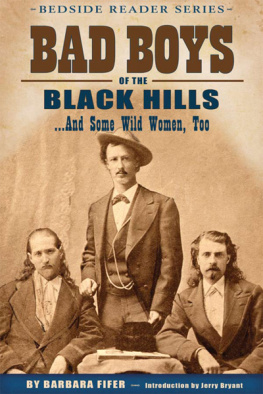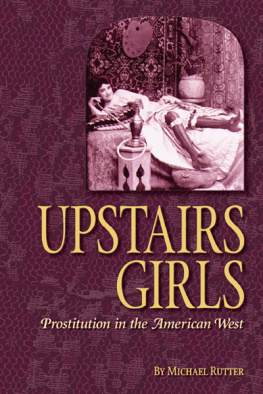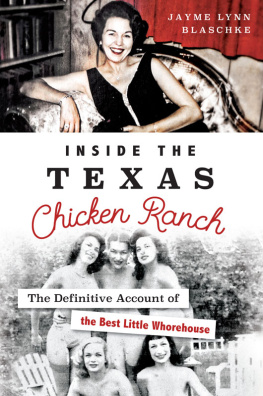2001, 2016 Lee Butts
All rights reserved. No part of this book may be reproduced in any form or by any electronic or mechanical means, including information storage and retrieval systems, without written permission from the publisher, except by a reviewer who may quote passages in a review.
Published by Lone Star Books
An imprint of Globe Pequot
4501 Forbes Boulevard, Suite 200 Lanham, MD 20706
Distributed by NATIONAL BOOK NETWORK
Originally published by Republic of Texas Press
British Library Cataloguing-in-Publication Information available
Library of Congress Cataloging-in-Publication Data available
ISBN 978-1-4930-2616-6 (paperback)
ISBN 978-1-4930-2617-3 (e-book)
 The paper used in this publication meets the minimum requirements of American National Standard for Information SciencesPermanence of Paper for Printed Library Materials, ANSI/NISO Z39.48-1992.
The paper used in this publication meets the minimum requirements of American National Standard for Information SciencesPermanence of Paper for Printed Library Materials, ANSI/NISO Z39.48-1992.
For my wife Carol, who has always believed in me.
Contents
Chapter 1: Pistol Packin Mama
Sally Skull
Chapter 2: Hang Er High
Chipita Rodriguez
Chapter 3: Cathouse Madams
A Bevy of Shady Ladies
Chapter 4: The Sittin Hens of the Chicken Ranch
Mrs. Swine, Jessie Williams, and Edna Milton
Chapter 5: Texass Biggest Harlot
Sarah Bowman
Chapter 6: Hells Belle
Belle Starr
Chapter 7: The She Devil and the Dark Angel
Beulah Morose
Chapter 8: Mistress of the Manor
Sophia Suttenfield Aughinbaugh Coffee Butt (or Butts) Porter
Chapter 9: A Mystery Wrapped in an Enigma
Etta Place
Chapter 10: Neighbors from Hell
Allen Hill, Dusky, Nance, and Family
Chapter 11: AKA Carlotta J. Thompkins, Mystic Maude, and the Angel of San Antonio
Lottie Deno
Chapter 12: Nekkid, Nekkid, Nekkid!
Adah Isaacs Menken
Chapter 13: A Good Girl Gone Bad
Bonnie Parker
Chapter 14: Its Sad, So Sad
Janis Joplin
Chapter 15: A Bad Girl Gone Good
Karla Faye Tucker
Preface
A mericans love an outlaw. From the very earliest recorded incidences of civil disobedience to the televised trials of modern murderers, we have followed the lives and careers of our darker-natured cousins with what borders on a pathological interest. The American West of myth and legend teemed with such people. Names like Billy the Kid, Jesse James, Butch Cassidy, Clay Allison, and John Wesley Hardin still have the power to sell books and matinee movie tickets. Pat Garrett, Wild Bill Hickok, Bat Masterson, and Wyatt Earp became equally famous for their efforts at trying to make such men toe the line.
Closely following the plainsmen, cowboys, railroaders, rivermen, settlers, and outlaws, their women tended to blend into the background clutter of children, spirit-breaking work, and early death. But as the old philosopher liked to say, for every rule there are exceptions. The bad girls of the West, and of Texas in particular, tended to be glowing examples of those exceptions. And although Sally Skull, Chipita Rodriguez, and Sarah Bowman have never achieved the name recognition of their more hairy-legged counterparts, Etta Place, Belle Starr, and Bonnie Parker enjoy a degree of fame far exceeding a host of equally gifted male evildoers, gunfighters, and thugs of the last two centuries.
The text that follows is a sometimes humorous, sometimes tongue-in-cheek, sometimes deeply sad and affecting set of biographies of twenty-plus Texas bad girls. Were talking the baddest of the bad, the evilest of the evil, the nastiest of the nasty, and sometimes even the just plain ol universal royal pain in somebodys aching bazoobus. Husband killers, run-of-the-mill murderers, whorehouse madams, prostitutes, gamblers, bank robbers, floozies, and just everyday hussies, theyre all here and each contributes immeasurably to a rowdy, ribald history that dates from the states earliest settlers to yesterdays biggest news story.
The bad girls of Texas prance across the pages of this book in a seamless parade of behavior so far outside the realm of common convention that their places in history were virtually guaranteed even while they lived. The choices they made in lifestyle assured the harshest of societal criticism and condemnation then and now, but our relentless curiosity wont let them rest. Every few years a book like Gail Drago and Ann Ruffs wonderful Outlaws in Petticoats appears to remind us that these ladies did exist and that their tumultuous lives contributed greatly to the huge crazy quilt of our shared history. This in spite of the fact that some who deem themselves the keepers of the flame that is our past would prefer that such women simply slide into historic oblivion.
The sheer depth and variety of their unfettered behavior is a thing to behold in and of itself. Sally Skull drove horses and cattle in South Texas, smuggled guns, fought with pistols, and pretty much dared anyone to get in her way. Everyone knew you didnt stop ol Sally and go through her herds looking for strays because it could get you shot. She married a number of times and is believed to have personally disposed of at least one of her husbands. Chipita Rodriguez made the mistake of being in the wrong place at the wrong time and ended up dangling from the limb of a tree for it. For more than a century it was believed her hanging was the only legal execution carried out on a woman in Texas. Fannie Porter, Mary Porter, Tillie Howard, Fat Alice Abbot, Jessie Williams, and Edna Milton worked the management end of the worlds oldest profession with all the ups and downs, and ins and outs of such an avocation. Sarah Bowman and Beulah Moroseand perhaps Sophia Porter and Etta Placeall plied the soiled dove trade at some point during their lives. Belle Starr and Nance Hill stole horses, drank, gambled, and fought anyone who questioned their behavior in much the same way you would expect of aggressive men over-amped on testosterone. Adah Isaacs Menken and Janis Joplin led astonishingly short, meteoric lives as entertainers and purveyors of their own form of popular culture at the time. The beautiful and mysterious Lottie Deno sat at pokers green felt tables with some of the Old Wests most famous and infamous gamblers, gunmen, and grifters. And Karla Faye Tucker, well Karla Faye did it all.
Anyone who reads or studies much has to admit that history is a fickle thing. The forever shifting boundary that divides one mans fact from anothers fairy tale often proves hard to pin down. It isnt unusual to find a variety of versions, times, and circumstances for a single incident. When you have someone like Adah Isaacs Menken telling and retelling her own life story for the benefit of gullible writers and reporters who had no way to check the facts, you end up with a mind-boggling level of stupefaction that results in a kind of one from column A, one from column B method of historical reportage. Such is the case with Texas Bad Girls . If dates, places, and times dont quite match what you as the reader feel are correct, you have the writers permission to take a pencil, scratch through that offensive piece of bull feathers, and add whatever butters your biscuits. Unfortunately, prior to the middle of the twentieth century, information about most women of the wild and woolly West is based on myth, legend, sketchy public records, second- to fourth-hand retellings, outright fabrications, and little else. Ladies of questionable background rarely kept diaries or journals and in most instances neither sought nor wanted public attention. As a consequence, dates, name spellings, and hard facts got poorly treated or embellished most of the time.









 The paper used in this publication meets the minimum requirements of American National Standard for Information SciencesPermanence of Paper for Printed Library Materials, ANSI/NISO Z39.48-1992.
The paper used in this publication meets the minimum requirements of American National Standard for Information SciencesPermanence of Paper for Printed Library Materials, ANSI/NISO Z39.48-1992.